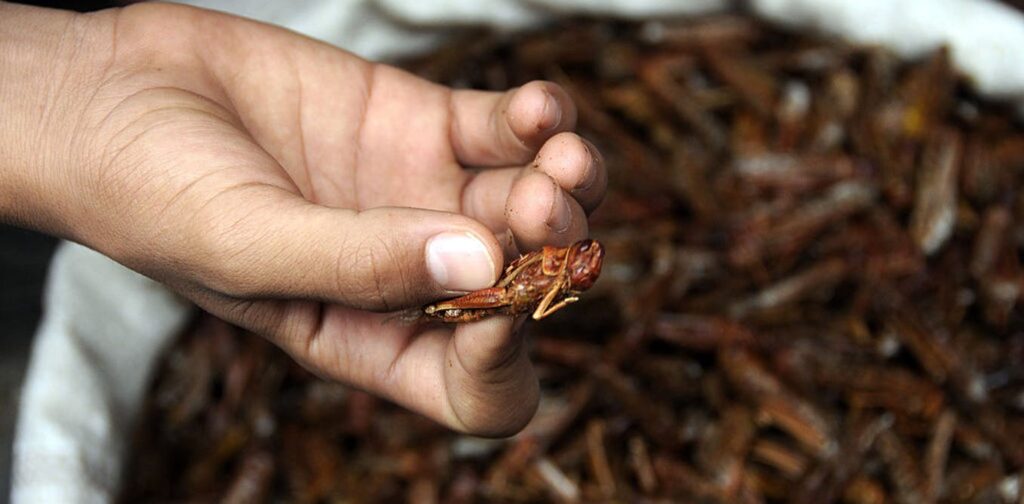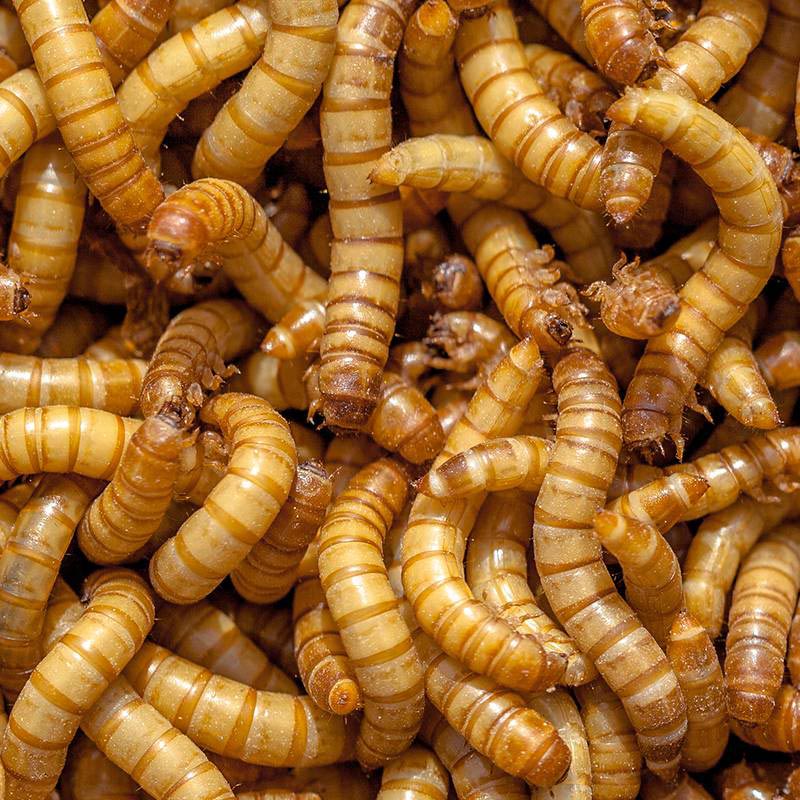LOCUSTS ON THE MENU AS EU APPROVES THEM FOR HUMAN CONSUMPTION
Locusts have become the second insect to be approved for human consumption by the European Commission, following the green light given to mealworms earlier this year.
In giving the thumbs up, the European Union’s executive arm said that the United Nations’ Food and Agriculture Organisation (FAO) has given a positive assessment of the environmental impact of eating insects.
On its website, the commission said that it was, however, “up to consumers to decide whether they want to eat insects or not”.
“The use of insects as an alternate source of protein is not new and insects are regularly eaten in many parts of the world,” the commission added.
Eaten as a snack or an ingredient in food, locusts are sold in frozen, dried or powdered form. With frozen and dried forms, wings and legs are usually removed to make the creatures easier to digest.
Approval for the consumption of migratory locusts, known scientifically as Locusta migratoria, was granted after a Dutch company, Fair Insects BV, requested permission to begin selling locusts in the EU.
Protix, Fair Insects BV’s parent company, reportedly already produces crickets, mealworms and flies as food ingredients and human snacks.
Fair Insects BV went through what the European Commission said was “a stringent scientific assessment” by the European Food Safety Authority (EFSA) before being given approval to market migratory locusts.

Requirements on labelling have been specified in the authorisation of locusts because the EFSA said there was a risk of people having an allergic reaction.
There are particular risks of allergic reactions in people who have allergies to crustaceans, dust mites and molluscs, while allergens from the feed, such as gluten, may be found in the insects, the commission cautioned.
As reported in Sial Paris Newsroom, earlier this year the EU approved the consumption of dried yellow mealworms, which can be eaten whole or in powdered form on their own or as an ingredient.
The larval form of a beetle with the scientific name Tenebrio molitor, mealworms were the first insects to be approved as human food by the European Food Safety Authority.
The FAO has previously made positive comments about mealworms, saying they could help make diets more varied, improve food security and reduce the ecological impact of agriculture.
The commission said that the FAO sees eating insects as “especially relevant” at a time when the cost of animal protein is increasing and there are concerns over, for example, population growth and environmental pressures.
“Thus, alternatives to conventional livestock need to be found,” the commission said. “The consumption of insects therefore contributes positively to the environment and to health and livelihoods.
“FAO also indicates that insects are a highly nutritious and healthy food source with high fat, protein, vitamin, fibre and mineral content.
“Therefore they are an alternative protein source facilitating the shift towards healthy and sustainable diets.”

Dried insects are already sold in some EU countries, according to reports, but the latest approval gives the go-ahead for their sale on a larger scale.
While locusts have been approved in the EU, warnings were made last year that people in countries that face plagues of the creatures should be cautious about eating them because of possible chemical contamination.
Writing in The Conversation, Dr Joost Van Itterbeeck, a researcher at Rikkyo University in Japan, said that control using chemical insecticides or insect fungi could make the insects dangerous to eat.
This applies to insects caught from the wild and not those that have been farmed, as will be the case for those sold in the EU.
Dr Van Itterbeeck wrote that eating insects was common on many parts of the world, including Africa, the Middle East, South Asia and North America, when plagues took place.
“Plagues were an ancient challenge that many communities addressed by turning them into food,” he said.
Locusts and grasshoppers have been eaten for centuries in parts of Africa, Dr Van Itterbeeck wrote, and are still consumed in some places.
“For instance in Madagascar, during locust swarm outbreaks with crops gone, locusts were used as both food and animal feed. During my research in Madagascar I found that this is still the case today,” he wrote.
Join us at SIAL Paris as exhibitor Join us at SIAL Paris as visitor
